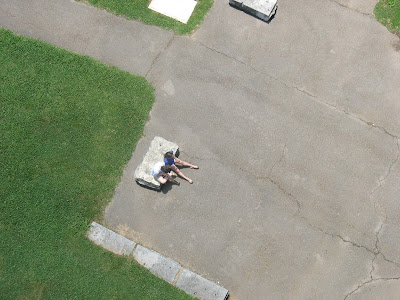Monday. Battle of Chickamauga, outside Chattanooga, Tennessee.
The Battle of Chickamauga, fought September 19–20, 1863, marked the end of a Union offensive in southeastern Tennessee and northwestern Georgia called the Chickamauga Campaign. The battle was the most significant Union defeat in the Western Theater of the American Civil War and involved the second highest number of casualties in the war following the Battle of Gettysburg.
The battle was fought between the Army of the Cumberland under Maj. Gen. William Rosecrans and the Confederate Army of Tennessee under Gen. Braxton Bragg, and was named for Chickamauga Creek, which meanders near the battle area in northwest Georgia.
Rosecrans went on the offensive, aiming to force the Confederates out of Chattanooga. In early September, Rosecrans consolidated his forces scattered in Tennessee and Georgia and forced Bragg's army out of Chattanooga, heading south. But Bragg was determined to reoccupy Chattanooga and decided to meet a part of Rosecrans's army, defeat it, and then move back into the city. On September 17 he headed north, intending to attack the isolated XXI Corps. As Bragg marched north on September 18, his cavalry and infantry fought with Union cavalry and mounted infantry, which were armed with Spencer repeating rifles.
Fighting began in earnest on the morning of September 19. Bragg's men strongly assaulted but could not break the Union line. The next day, Bragg resumed his assault. In late morning, Rosecrans was misinformed that he had a gap in his line. In moving units to shore up the supposed gap, Rosecrans accidentally created an actual gap, directly in the path of an eight-brigade assault on a narrow front by Confederate Lt. Gen. James Longstreet. Longstreet's attack drove one-third of the Union army, including Rosecrans himself, from the field. Union units spontaneously rallied to create a defensive line on Horseshoe Ridge, forming a new right wing for the line of Maj. Gen. George H. Thomas, who assumed overall command of remaining forces. Although the Confederates launched costly and determined assaults, Thomas and his men held until twilight. Union forces then retired to Chattanooga while the Confederates occupied the surrounding heights, besieging the city.
The Yankees built log breastworks kind of like this to hide behind.
I had the idea that this lumpy tree, which faces an artillery unit, was shot full of cannonballs, but it's probably just a romantic notion. The trees here fascinated me, and I kept wondering which of them had stood sentinel over the battles.
Remember those beautiful homes? Eufaula, Alabama.
A number of homes stood along the battles lines at Chickamauga, including this one.
This is an 80-foot tall monument. Brennan and I climbed it and looked out over the treetops.
Hailey & Claire below us. Brennan took this one, because I didn't want to get that close to the edge.
After leaving Chickamauga, we saw a sign for a Civil War train thing and went to investigate. We toured a small museum and then took a ride through an old train tunnel. Apparently a small battle was fought here, but I can't remember the name and couldn't find it anywhere.
Do you know about "Sherman Neckties"? I did, but I didn't know how they were made.
The bent rail was recovered from a local creek - a real "Sherman Necktie."
The train.
This is "kudzu vine." Where it grows, it covers everything in its path. Scary stuff. According to Wikipedia: Kudzu (Pueraria lobata) is a serious invasive plant in the United States. It has been spreading in the southern U.S. at the rate of 150,000 acres (61,000 ha) annually, "easily outpacing the use of herbicide spraying and mowing, as well increasing the costs of these controls by $6 million annually." Its introduction has produced devastating environmental consequences. This has earned it the nickname, "The vine that ate the South."
And this is a local plant the Native Americans used as diapers. It's very soft.
We learned a couple of other interesting Civil War tidbits:
Brother vs. Brother
- On December 26, 1861, Confederate Lt. Col. Nathan Bedford Forrest was ordered to probe the strength of Union troops in and around Camp Calhoun, Kentucky. Two Confederate forward scouts, Adam R. Johnson and Robert M. Martin, each had brothers stationed at the camp.
- On May 23, 1862, at the Battle of Front Royal, Capt. William Goldsborough of the Confederate 1st Maryland Infantry captured his brother Charles Goldsborough of the Union 1st Maryland Infantry and took him prisoner. The battle is also notable for being the only time in United States military history that two regiments from the same state with the same numerical designation have engaged each other in battle.
- The Crittenden brothers were brigadier generals on opposite sides of the conflict—George Bibb Crittenden within the Confederate Army and Thomas Leonidas Crittenden within the Union Army.
- The Terrill brothers were also brigadier generals on opposite sides of the conflict— James Barbour Terrill within the Confederate Army (killed at the Battle of Totopotomoy Creek) and William Rufus Terrill within the Union Army (killed at the Battle of Perryville)


























No comments:
Post a Comment